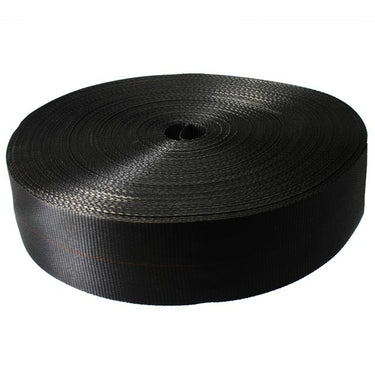
Cargo Webbing: What's the Difference Between Nylon and Polyester?
Cargo webbing is used for a variety of tie downs, cargo nets, seat belts, etc., but there’s a difference in the fabrication of the webbing. Polyester webbing and nylon webbing are the two major categories, along with another polyester fabric webbing that’s known in the industry as seatbelt webbing. While all three may seem similar, some differences will make one better than another for certain applications.
Nylon Webbing
Nylon webbing offers a good combination of both stretch and strength. It has the ability to stretch about 5% to 7% at rated capacity and approximately 30% at break strength. This snap-back quality makes nylon cargo webbing a great choice for recovery straps because of its ability to recover stuck vehicles.
Nylon tie downs should not be used in temperatures above 194 degrees F (90 degrees C) or below -40 degrees F (-40 degrees C). It should also not come in contact with objects above or below those temperatures, including anchor points, the cargo being secured, or a vehicle.
Polyester Webbing
Like nylon webbing, polyester webbing is strong and durable, but it lacks the ability to stretch the same way nylon does. This makes it ideal for tie-down applications where cargo must stay secure and not be allowed to bounce: ratchet straps, motorcycle tie downs, cargo nets, etc.
Polyester cargo webbing is also versatile as you can add your own tie-down hardware to create your own custom tie-down straps. Like nylon, polyester webbing should not be used in temperatures above 194 degrees F (90 degrees C) or below -40 degrees F (-40 degrees C), or come in contact with objects (anchor points, cargo being secured, or vehicle) above or below those temperatures.
Seatbelt Webbing
Seatbelt webbing is also a polyester webbing so it offers the same benefits of strength and little stretch. While still a tough, high-quality webbing, it is a less expensive option because it’s offered in just one size and three color options. Seat belt webbing also has a thinner profile than typical polyester cargo web, so it’s great for lighter duty applications such as bag handles, life jacket straps, etc.
When using seatbelt webbing for any application, you should also follow the maximum and minimum temperatures guidelines outlined above for polyester webbing.



